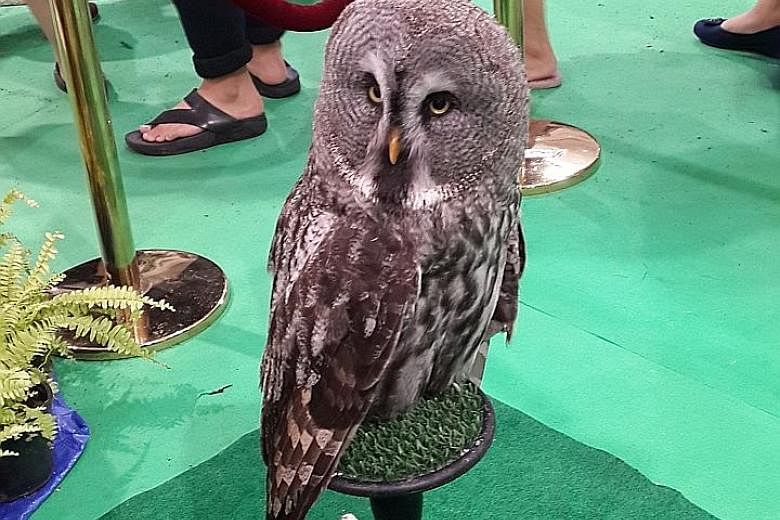Waiting in a half crouch, the tigers stare at the rifle-toting stranger. A squeeze of the trigger sparks a clang in the distance. The clasp of a metal box strung above the enclosure snaps, raining chunks of raw chicken down on the waiting cats.
Tourists behind him roar with approval. "Hao!" they shout in Mandarin, queueing up with 200 baht (S$7.80) each to play this feeding game at Sriracha Tiger Zoo.
This zoo about 90 minutes from Bangkok, like many other wildlife attractions in Thailand, has come under increasing scrutiny since the wildlife authorities raided the Tiger Temple in May.
That facility in Kanchanaburi province had earned more than 100 million baht a year in ticket sales by touting itself as a tiger sanctuary overseen by monks, but what officials uncovered - tiger pelts, fangs and amulets made from tiger parts - bolstered long-held allegations that it had been involved in the breeding and trafficking of these animals.
The exposure has drawn attention to scores of similar tourism attractions across the country, as well as the use of wildlife for entertainment. Against these, wildlife officials have only an arsenal of ineffectual laws that are undergoing revisions. Thailand's recently introduced animal cruelty law, for example, does not clearly define what constitutes cruelty.
Meanwhile, the Department of National Parks, Wildlife and Plant Conservation (DNP) is facing bitter opposition from commercial interests as it tries to tighten governance of private zoos. Rules governing some 50 private zoos leave so much to interpretation that Pata Zoo, which houses about 200 animals on top of a Bangkok mall, has been able to operate legally for years.
One does not have to travel far to find the next menagerie.
In April, a popular suburban mall just outside Bangkok exhibited exotic owls in its atrium, with barely an arm's length between the birds and the public. Under the glare of mall lights, visitors reached over barrier ropes and held their mobile phones within touching distance of the great horned owl, snowy owl and other nocturnal hunters.
Over in eastern Bangkok, a weekend floating market called Kwan Riam exhibits wallabies in an enclosure lined with brick and fake grass, and adorned with an artificial tree. Its management says it has all the legal paperwork for these marsupials.
Sriracha Tiger Zoo tries to attract visitors by putting piglets dressed in tiger stripes next to a nursing tigress. But photographs with tiger cubs are the main draw. Before a colourful billboard fronted by a life-sized tiger replica, the staff pull a restless cub out of a cage and stick the milk bottle nipple in its mouth. They thrust it on the lap of a paying tourist for the camera, before yanking the bottle away from the struggling cub. The whole process takes less than 10 seconds. The cost? Two hundred baht.
New rules being drafted for private zoos will rein in such practices, DNP's deputy director-general Adisorn Nuchdamrong told The Straits Times.
"Visitors will not be allowed close to dangerous animals, or to touch them for taking pictures," he said. Zoos will also need to be established on actual land (instead of buildings), and specify the amount of space that each enclosure will have.
Animal welfare activists, however, say there is incentive to bend the rules as long as there is strong tourist demand.
The founder of Love Wildlife Thailand, Ms Nancy Gibson, said: "It's the mentality of being a tourist. When you are travelling... you are not thinking about whether something is right or wrong. You are just thinking about fun."
On a Monday morning that The Straits Times visited Sriracha, there were at least five coach-loads of tourists. Together with walk-in visitors, they filled most of the seats in a stadium where tigers jumped through flaming hoops. One of them flattened its ears against its skull like a frightened house cat.
The zoo did not respond to requests for comments. And tourists approached were unperturbed by what they saw.
"I don't think there is any harm brought on the tiger," said Mr Saurabh Kumar, a 25-year-old engineer from India. "But their habitat (here) is slightly different."
WATCH THE VIDEO
See what tigers have to do at the Sriracha Zoo http://str.sg/4iZB.


